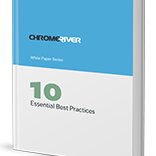 An employee has received approval to attend an important conference — her first trip on the company’s dime. “Just email me the flight details, and I’ll pay for it with a company credit card,” her supervisor says. Knowing the travel budget is tight, the employee submits the lowest fare. But her supervisor ultimately books a slightly more expensive ticket after identifying a better flight that avoids a long layover on an airline that offers the company a volume discount.
An employee has received approval to attend an important conference — her first trip on the company’s dime. “Just email me the flight details, and I’ll pay for it with a company credit card,” her supervisor says. Knowing the travel budget is tight, the employee submits the lowest fare. But her supervisor ultimately books a slightly more expensive ticket after identifying a better flight that avoids a long layover on an airline that offers the company a volume discount.
Allowing employees a measure of choice in travel and entertainment (T&E) decisions is important for morale, and looking for the cheapest choice doesn’t always add up to cost-effective expense management. A good automated expense policy can help balance individual needs and a company’s overall interests, combining spending guidelines with software tools to create an efficient way to approve and reimburse business-related expenses.
For employees, these systems supply a range of pre-approved options, encouraging greater independence with T&E decisions. Employees can see clearly what’s expected, which improves morale, mitigates risks, and encourages the right kinds of behaviors. From a company perspective, automated travel expense management can make it easier to take advantage of preferred customer accounts and volume discounts. When managers have better access to information, they can negotiate more favorable travel arrangements, streamline spending parameters, and identify opportunities for preferred vendor relationships.
Employee choice and company interest aren’t necessarily at odds. Making that case requires clear, consistent communication, and an automated expense policy is an ideal way to establish and refine this communication over time.
As the following examples show, the cheapest options often aren’t the best value when it comes to T&E expenses.
- The cheapest choice results in inefficient use of employee time. If the cheapest flight results in long layovers or more time away from the office, it’s probably not cost-effective.
- The cheapest choice doesn’t support company-wide savings. One hotel might be slightly less expensive upfront, but the best deal might be one with a negotiated price that offers the business a lower company-wide rate.
- The cheapest choice sends the wrong message to clients, customers or partners. Taking a valued business associate to an inferior restaurant might save a few dollars, but it’s a poor choice if it risks undermining a lucrative relationship.
- The cheapest choice sends the wrong message to employees. When an employee is representing your company on the road, don’t dampen their enthusiasm and confidence by making them feel they’re being treated poorly.
- The cheapest choice’s inferior quality makes an item more expensive in the long term. If your company provides laptops and mobile devices to employees, cheap tools aren’t a bargain if they quickly break or become obsolete. The same goes for company-branded travel luggage or clothing.
Do some of these scenarios sound familiar? We’d love to hear how your company handles these situations in the comments section below!
Subscribe
Latest Posts
Posts by Category
I just love the Chrome River application. I could probably sell it! Finance Administrative Coordinator Law Firm, 800 Employees
Can’t we just move year-end, so that we can roll out Chrome River sooner!? Financial Systems Director Law Firm, 300 Employees


Comments